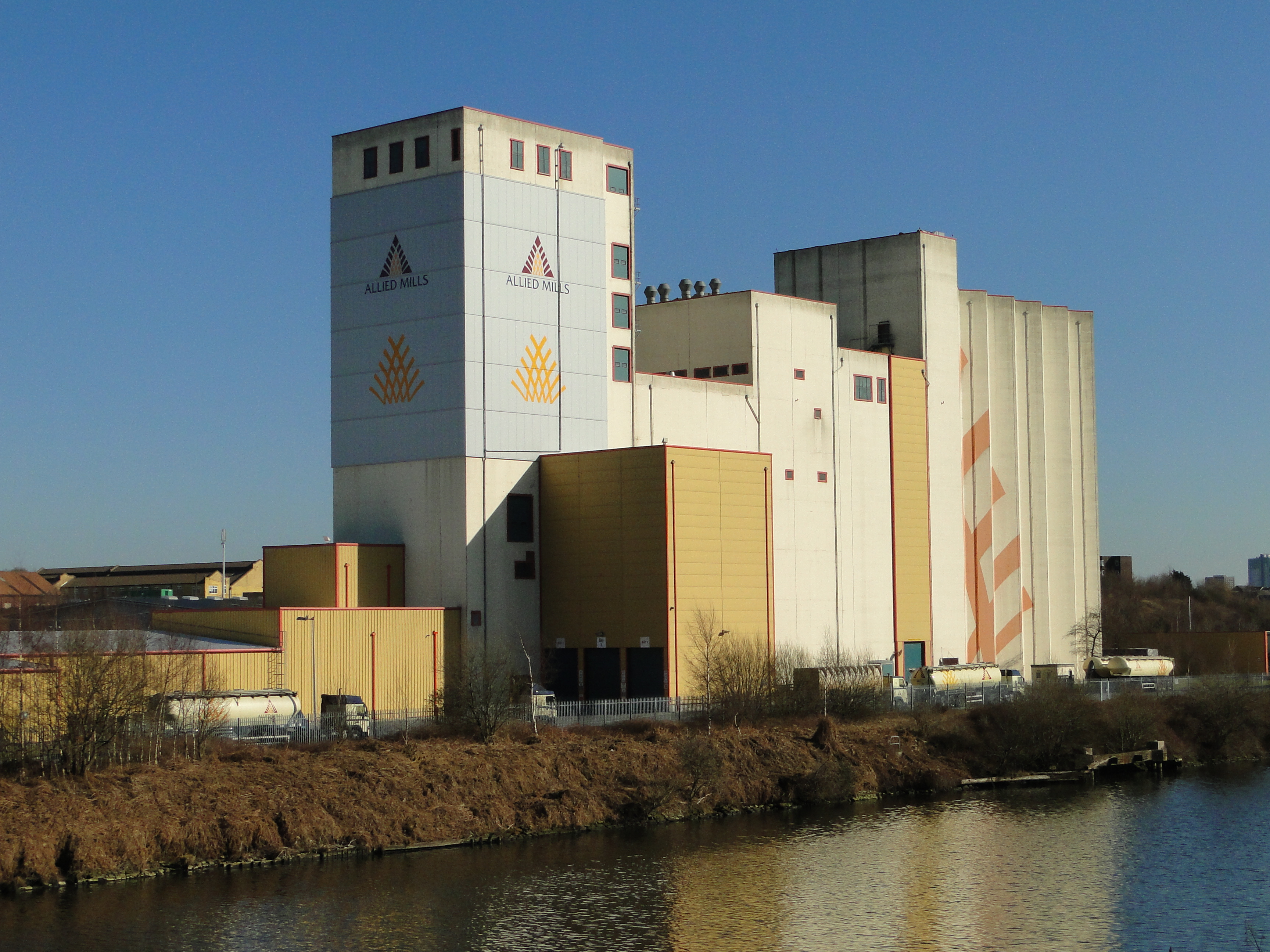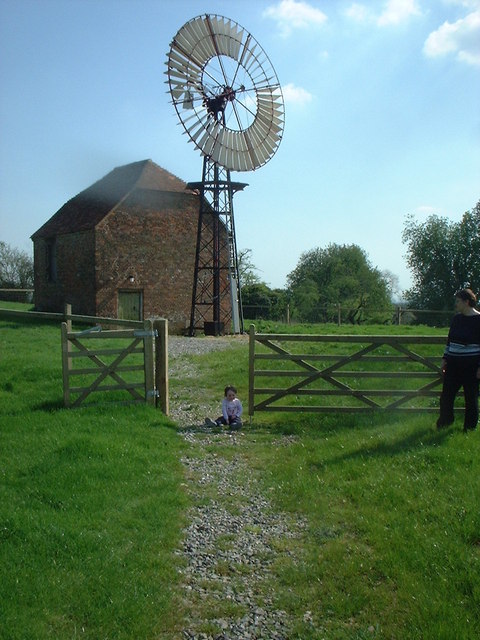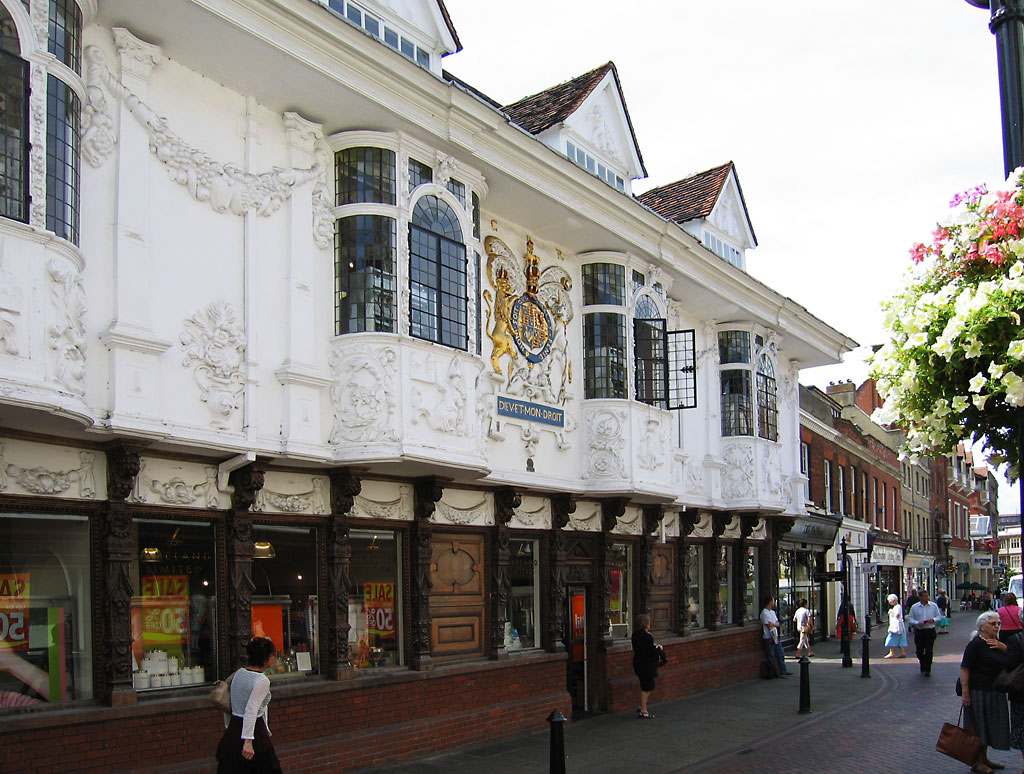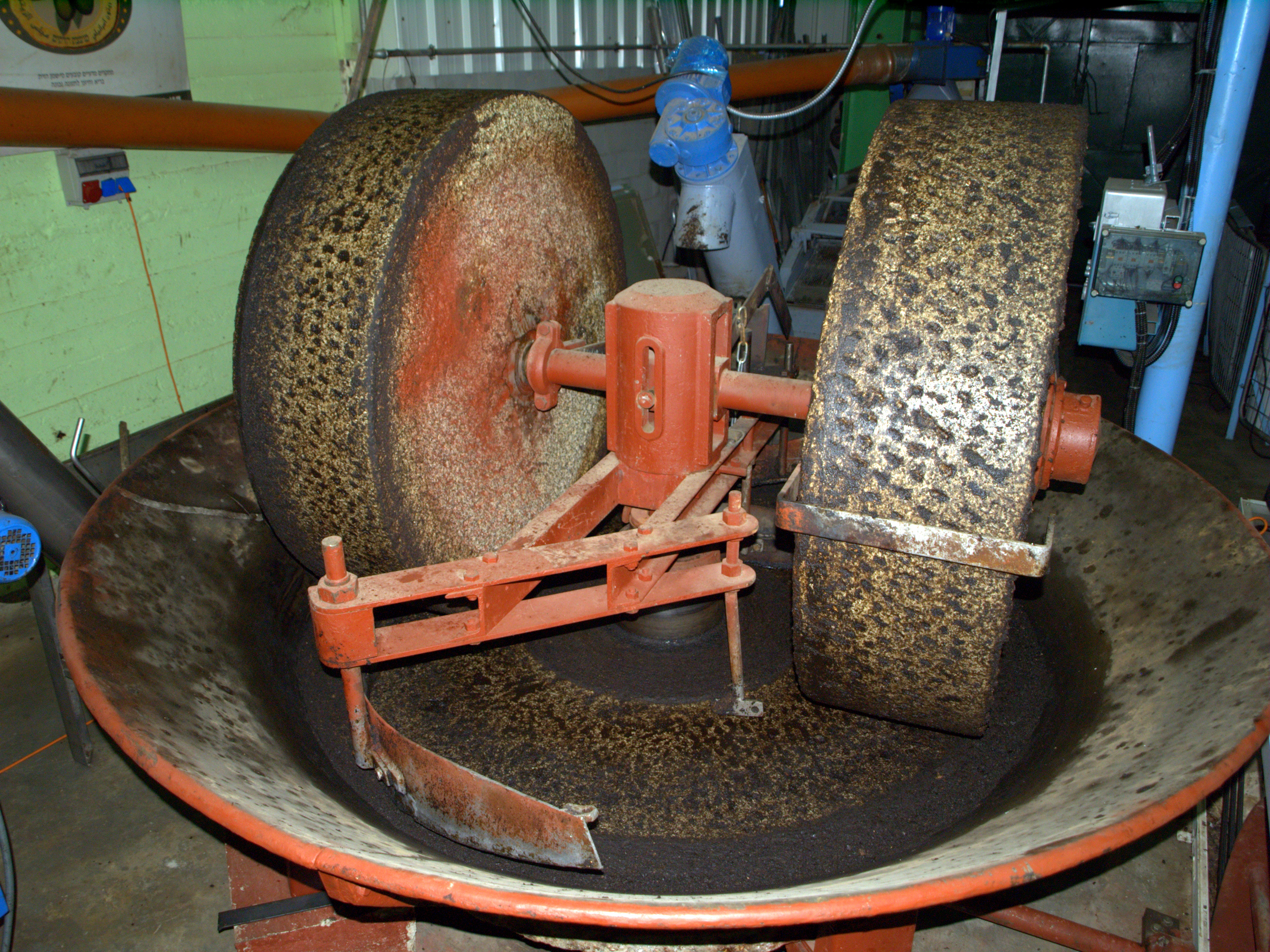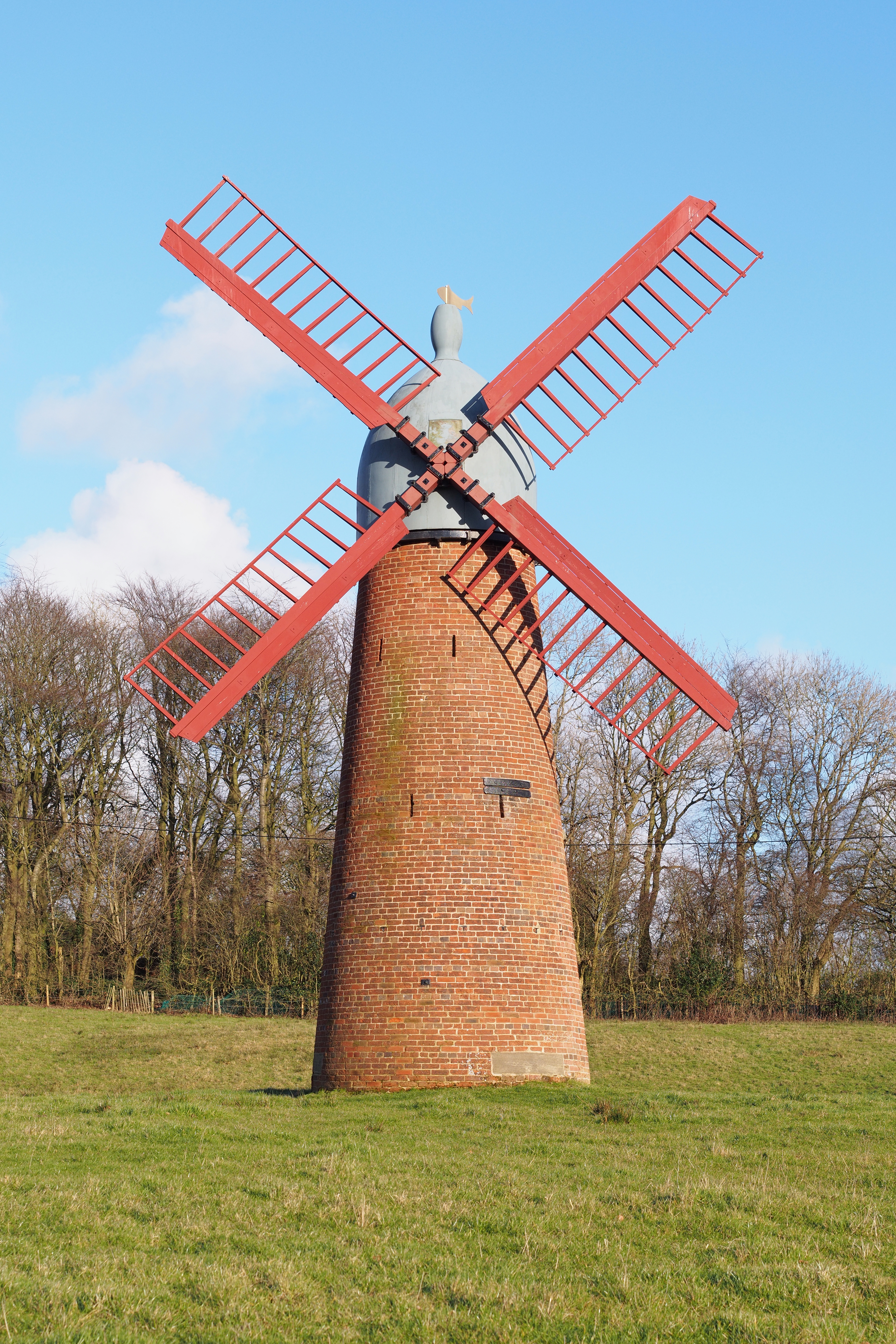|
Gazeley Windmill
Gazeley Mill is a tower mill at Gazeley, Suffolk, England which has been converted to residential accommodation. History Gazeley Mill was built in 1837 by William Death, replacing a nearby post mill. The mill drove five pairs of millstones. A Gippeswyck oil engine was installed by Turners, the Soham millwrights in 1880. In 1893, a one-and-a-half-sackA capacity of 1½ sacks (30 stone / 190kg) per hour roller mill made by Messrs E R & F Turner of Ipswich was installed. This was driven by the oil engine, which could also drive three of the five pairs of millstones. The mill ceased work c.1920 and was stripped of machinery and house converted in 1947. Description Gazeley Mill is a six storey tower mill. It had a boat shaped cap with a gallery, winded by a fantail. The four patent sails Windmills are powered by their sails. Sails are found in different designs, from primitive common sails to the advanced patent sails. Jib sails The jib sail is found in Mediterranean countries ... [...More Info...] [...Related Items...] OR: [Wikipedia] [Google] [Baidu] |
Grist Mill
A gristmill (also: grist mill, corn mill, flour mill, feed mill or feedmill) grinds cereal grain into flour and Wheat middlings, middlings. The term can refer to either the Mill (grinding), grinding mechanism or the building that holds it. Grist is grain that has been separated from its chaff in preparation for grinding. History Early history The Greek geographer Strabo reports in his ''Geography'' a water-powered grain-mill to have existed near the palace of king Mithradates VI Eupator at Cabira, Asia Minor, before 71 BC. The early mills had horizontal paddle wheels, an arrangement which later became known as the "Water wheel#Vertical axis, Norse wheel", as many were found in Scandinavia. The paddle wheel was attached to a shaft which was, in turn, attached to the centre of the millstone called the "runner stone". The turning force produced by the water on the paddles was transferred directly to the runner stone, causing it to grind against a stationary "Mill machinery#Wat ... [...More Info...] [...Related Items...] OR: [Wikipedia] [Google] [Baidu] |
Soham
Soham ( ) is a town and civil parish in the district of East Cambridgeshire, in Cambridgeshire, England, just off the A142 between Ely and Newmarket. Its population was 10,860 at the 2011 census. History Archaeology The region between Devil's Dyke and the line between Littleport and Shippea Hill shows a remarkable amount of archaeological findings of the Stone Age, the Bronze Age and the Iron Age. A couple of hoards of bronze objects are found in the area of Soham, including one with swords and spearheads of the later Bronze Age as well as a gold torc, retrieved in 1938. A large Anglo-Saxon settlement was discovered on land between Brook Street and Fordham Road, next to Roman remains in the old Fisky's Hill area and former allotment site in 2013 and onwards. During the establishment of the Fordham Road cemetery, in the late 1800's, burial remains were also found with several high-status grave goods, including a girdle hanger, beads and Jewlery. These items are now house ... [...More Info...] [...Related Items...] OR: [Wikipedia] [Google] [Baidu] |
Windmills Completed In 1837
A windmill is a structure that converts wind power into rotational energy using vanes called sails or blades, specifically to mill grain (gristmills), but the term is also extended to windpumps, wind turbines, and other applications, in some parts of the English speaking world. The term wind engine is sometimes used to describe such devices. Windmills were used throughout the high medieval and early modern periods; the horizontal or panemone windmill first appeared in Persia during the 9th century, and the vertical windmill first appeared in northwestern Europe in the 12th century. Regarded as an icon of Dutch culture, there are approximately 1,000 windmills in the Netherlands today. Forerunners Wind-powered machines may have been known earlier, but there is no clear evidence of windmills before the 9th century. Hero of Alexandria (Heron) in first-century Roman Egypt described what appears to be a wind-driven wheel to power a machine.Dietrich Lohrmann, "Von der östlichen ... [...More Info...] [...Related Items...] OR: [Wikipedia] [Google] [Baidu] |
Tower Mills In The United Kingdom
A tower is a tall structure, taller than it is wide, often by a significant factor. Towers are distinguished from masts by their lack of guy-wires and are therefore, along with tall buildings, self-supporting structures. Towers are specifically distinguished from buildings in that they are built not to be habitable but to serve other functions using the height of the tower. For example, the height of a clock tower improves the visibility of the clock, and the height of a tower in a fortified building such as a castle increases the visibility of the surroundings for defensive purposes. Towers may also be built for observation, leisure, or telecommunication purposes. A tower can stand alone or be supported by adjacent buildings, or it may be a feature on top of a larger structure or building. Etymology Old English ''torr'' is from Latin ''turris'' via Old French ''tor''. The Latin term together with Greek τύρσις was loaned from a pre-Indo-European Mediterranean lan ... [...More Info...] [...Related Items...] OR: [Wikipedia] [Google] [Baidu] |
Windmills In Suffolk
A windmill is a structure that converts wind power into rotational energy using vanes called sails or blades, specifically to mill grain ( gristmills), but the term is also extended to windpumps, wind turbines, and other applications, in some parts of the English speaking world. The term wind engine is sometimes used to describe such devices. Windmills were used throughout the high medieval and early modern periods; the horizontal or panemone windmill first appeared in Persia during the 9th century, and the vertical windmill first appeared in northwestern Europe in the 12th century. Regarded as an icon of Dutch culture, there are approximately 1,000 windmills in the Netherlands today. Forerunners Wind-powered machines may have been known earlier, but there is no clear evidence of windmills before the 9th century. Hero of Alexandria (Heron) in first-century Roman Egypt described what appears to be a wind-driven wheel to power a machine.Dietrich Lohrmann, "Von de ... [...More Info...] [...Related Items...] OR: [Wikipedia] [Google] [Baidu] |
Windmill Sail
Windmills are powered by their sails. Sails are found in different designs, from primitive common sails to the advanced patent sails. Jib sails The jib sail is found in Mediterranean countries and consists of a simple triangle of cloth wound round a spar. The mill must be stopped in order to adjust the reefing of the sail. Though rare in the UK, at least two windmills are known to have had jib sails (St Mary's, Isle of Scilly and Cann Mills, Melbury Abbas). Image:Windmill Antimahia Kos.jpg, Jib sails Image:Sobreiro.jpg, More fully spread Image:Spanish Mill, St Mary's.jpg, St Mary's, Isles of Scilly File:Cann Mill, Melbury Abbas.jpg, Cann Mills, Melbury Abbas Common sails The common sail is the simplest form of sail. In medieval mills, the sailcloth was wound in and out of a ladder-type arrangement of sails. Medieval sails could be constructed with or without outer sailbars. Post-medieval mill sails have a lattice framework over which the sailcloth is spread. There are vario ... [...More Info...] [...Related Items...] OR: [Wikipedia] [Google] [Baidu] |
Ipswich
Ipswich () is a port town and borough in Suffolk, England, of which it is the county town. The town is located in East Anglia about away from the mouth of the River Orwell and the North Sea. Ipswich is both on the Great Eastern Main Line railway and the A12 road; it is north-east of London, east-southeast of Cambridge and south of Norwich. Ipswich is surrounded by two Areas of Outstanding Natural Beauty (AONB): Suffolk Coast and Heaths and Dedham Vale. Ipswich's modern name is derived from the medieval name ''Gippeswic'', probably taken either from an Anglo-Saxon personal name or from an earlier name given to the Orwell Estuary (although possibly unrelated to the name of the River Gipping). It has also been known as ''Gyppewicus'' and ''Yppswyche''. The town has been continuously occupied since the Saxon period, and is contested to be one of the oldest towns in the United Kingdom.Hills, Catherine"England's Oldest Town" Retrieved 2 August 2015. Ipswich was a settlem ... [...More Info...] [...Related Items...] OR: [Wikipedia] [Google] [Baidu] |
Millwright
A millwright is a craftsperson or skilled tradesperson who installs, dismantles, maintains, repairs, reassembles, and moves machinery in factories, power plants, and construction sites. The term ''millwright'' (also known as ''industrial mechanic'') is mainly used in the United States, Canada and South Africa to describe members belonging to a particular trade. Other countries use different terms to describe tradesmen engaging in similar activities. Related but distinct crafts include machinists, mechanics and mechanical fitters . As the name suggests, the original function of a millwright was the construction of flour mills, sawmills, paper mills and fulling mills powered by water or wind, made mostly of wood with a limited number of metal parts. Since the use of these structures originates in antiquity, millwrighting could arguably be considered one of the oldest engineering trades and the forerunner of modern mechanical engineering. In modern usage, a millwright is enga ... [...More Info...] [...Related Items...] OR: [Wikipedia] [Google] [Baidu] |
Millstone
Millstones or mill stones are stones used in gristmills, for grinding wheat or other grains. They are sometimes referred to as grindstones or grinding stones. Millstones come in pairs: a convex stationary base known as the ''bedstone'' and a concave ''runner stone'' that rotates. The movement of the runner on top of the bedstone creates a "scissoring" action that grinds grain trapped between the stones. Millstones are constructed so that their shape and configuration help to channel ground flour to the outer edges of the mechanism for collection. The runner stone is supported by a cross-shaped metal piece ( millrind or rynd) fixed to a "mace head" topping the main shaft or spindle leading to the driving mechanism of the mill ( wind, water (including tide) or other means). History The earliest evidence for stones used to grind food is found in northern Australia, at the Madjedbebe rock shelter in Arnhem Land, dating back around 60,000 years. Grinding stones or g ... [...More Info...] [...Related Items...] OR: [Wikipedia] [Google] [Baidu] |
Tower Mill
A tower mill is a type of vertical windmill consisting of a brick or stone tower, on which sits a wooden 'cap' or roof, which can rotate to bring the sails into the wind.Medieval science, technology, and medicine: an encyclopedia (2005), 520 This rotating cap on a firm masonry base gave tower mills great advantages over earlier post mills, as they could stand much higher, bear larger sails, and thus afford greater reach into the wind. Windmills in general had been known to civilization for centuries, but the tower mill represented an improvement on traditional western-style windmills. The tower mill was an important source of power for Europe for nearly 600 years from 1300 to 1900, contributing to 25 percent of the industrial power of all wind machines before the advent of the steam engine and coal power. It represented a modification or a demonstration of improving and adapting technology that had been known by humans for ages. Although these types of mills were effec ... [...More Info...] [...Related Items...] OR: [Wikipedia] [Google] [Baidu] |
Post Mill
The post mill is the earliest type of European windmill. Its defining feature is that the whole body of the mill that houses the machinery is mounted on a single vertical post, around which it can be turned to bring the sails into the wind. All post mills have an arm projecting from them on the side opposite the sails and reaching down to near ground level. With some, as at Saxtead Green, the arm carries a fantail to turn the mill automatically. With the others the arm serves to rotate the mill into the wind by hand. The earliest post mills in England are thought to have been built in the 12th century. The earliest working post mill in England still used today is to be found at Outwood, Surrey. It was built in 1665. The earliest remaining example of a non-operational mill can be found in Great Gransden in Cambridgeshire, built in 1612.Windmills in Huntingdon and Peterborough. p. 3. Their design and usage peaked in the 18th and 19th centuries and then declined after the intr ... [...More Info...] [...Related Items...] OR: [Wikipedia] [Google] [Baidu] |
Suffolk
Suffolk () is a ceremonial county of England in East Anglia. It borders Norfolk to the north, Cambridgeshire to the west and Essex to the south; the North Sea lies to the east. The county town is Ipswich; other important towns include Lowestoft, Bury St Edmunds, Newmarket, and Felixstowe which has one of the largest container ports in Europe. The county is low-lying but can be quite hilly, especially towards the west. It is also known for its extensive farming and has largely arable land with the wetlands of the Broads in the north. The Suffolk Coast & Heaths and Dedham Vale are both nationally designated Areas of Outstanding Natural Beauty. History Administration The Anglo-Saxon settlement of Suffolk, and East Anglia generally, occurred on a large scale, possibly following a period of depopulation by the previous inhabitants, the Romanised descendants of the Iceni. By the fifth century, they had established control of the region. The Anglo-Saxon inhabitant ... [...More Info...] [...Related Items...] OR: [Wikipedia] [Google] [Baidu] |
